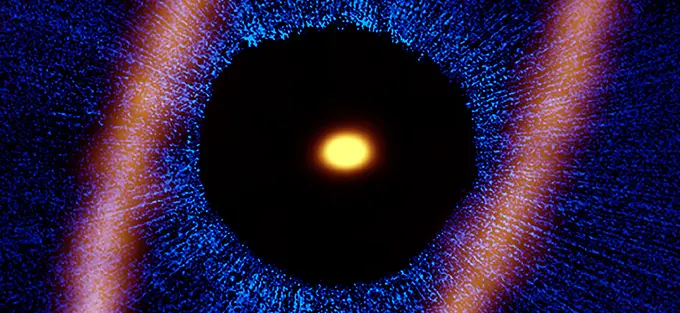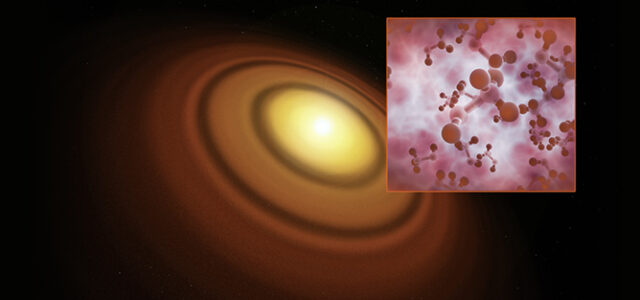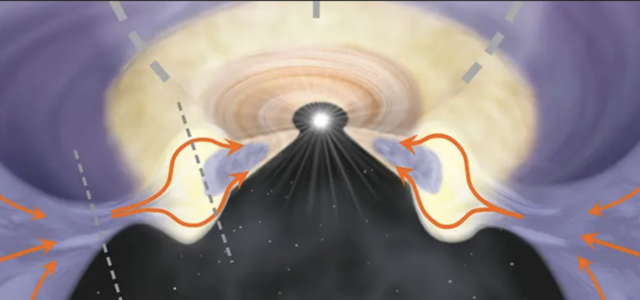ALMA sees rubble ring from planet-forming process
Read time: 3 minutes
Planets around other stars are hard to spot. In most cases, they are just too small. But a planetary system can betray its existence in other ways. ALMA has imaged a ‘ring’ of icy debris around the nearby star Fomalhaut. This ring can only be explained if Fomalhaut has a planetary system.
Planets are born in a flattened disk of gas and dust around a newborn star. Rocky material clumps together in Earth-like planets. Chunks of ice end up in giant planets like Jupiter. But not every bit of rock or ice finds its way into a planet. As a result, our own solar system has two belts of debris. The first one lies between the orbits of Mars and Jupiter. It consists of small, rocky asteroids. The second debris belt lies beyond the orbit of Neptune, and contains lots of icy objects.
The ring around Fomalhaut is a similar debris belt. The ring is much larger than an individual planet. Therefore, it’s much easier to detect with a telescope on Earth. In 2012, when ALMA was still under construction, a small part of the ring was already imaged. Now,
the 66-dish observatory has produced the first image of the full ring at millimeter wavelengths.
ALMA also observed carbon monoxide gas at the location of the ring. The gas must have been released by colliding comets. The observations suggest that the comets around Fomalhaut are very much like the comets in our own solar system.
The debris ring around Fomalhaut is relatively narrow. It has pretty sharp edges. And it’s not a perfect circle. At one side (at the lower left in the image), the ring is much closer to the star than on the opposite side.* All of this can only be explained if the ring is ‘sculpted’ by the gravity of planets.
A few years ago, the Hubble Space Telescope may have seen one of these planets already. In the future, astronomers hope to confirm this detection, and to find additional planets in the system.
* In the ALMA image, the ring looks like a strongly elongated ellipse. That’s because we don’t observe the ring face-on, but under an angle. But even if we could see it face-on, it would appear eccentric, with one side closer to the star than the opposite side.
What?

Fomalhaut is the brightest star in the constellation Piscis Austrinus (the Southern Fish). Because of its small distance of just 25 light-years, it can easily be seen by the naked eye. The star is twice as massive as the Sun. It’s also pretty young: just some 440 million years old (the Sun is ten times older!). The debris ring images by ALMA lies at a distance of some 20 billion kilometers from the star. That’s about 4,5 times the distance between our Sun and the planet Neptune. The Fomalhaut ring has a width of approximately 2 billion kilometers.
Who?
Over the past years, the Fomalhaut system has been studied extensively by Paul Kalas. Paul is an astronomer at the University of California at Berkeley. He also led the teams that carried out the Fomalhaut observations by ALMA. The teams wrote two scientific papers on their results. Both are published in The Astrophysical Journal. The lead author on the first paper is Meredith MacGregor. Meredith is an astronomer at the Harvard-Smithsonian Center for Astrophysics in Cambridge, Massahusetts. The lead author on the second paper is Luca Matrà, of the University of Cambridge in the United Kingdom.

ALMA URL



